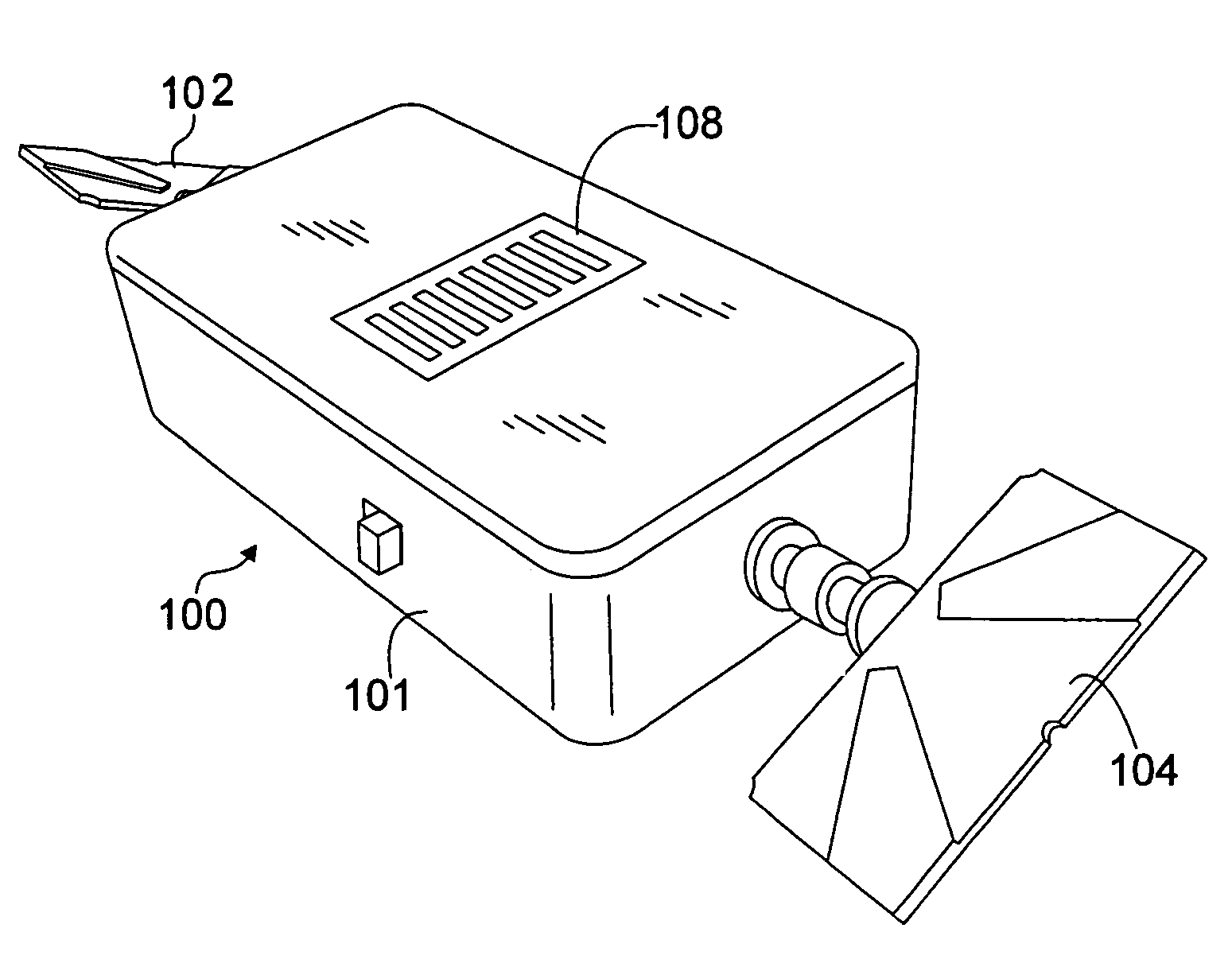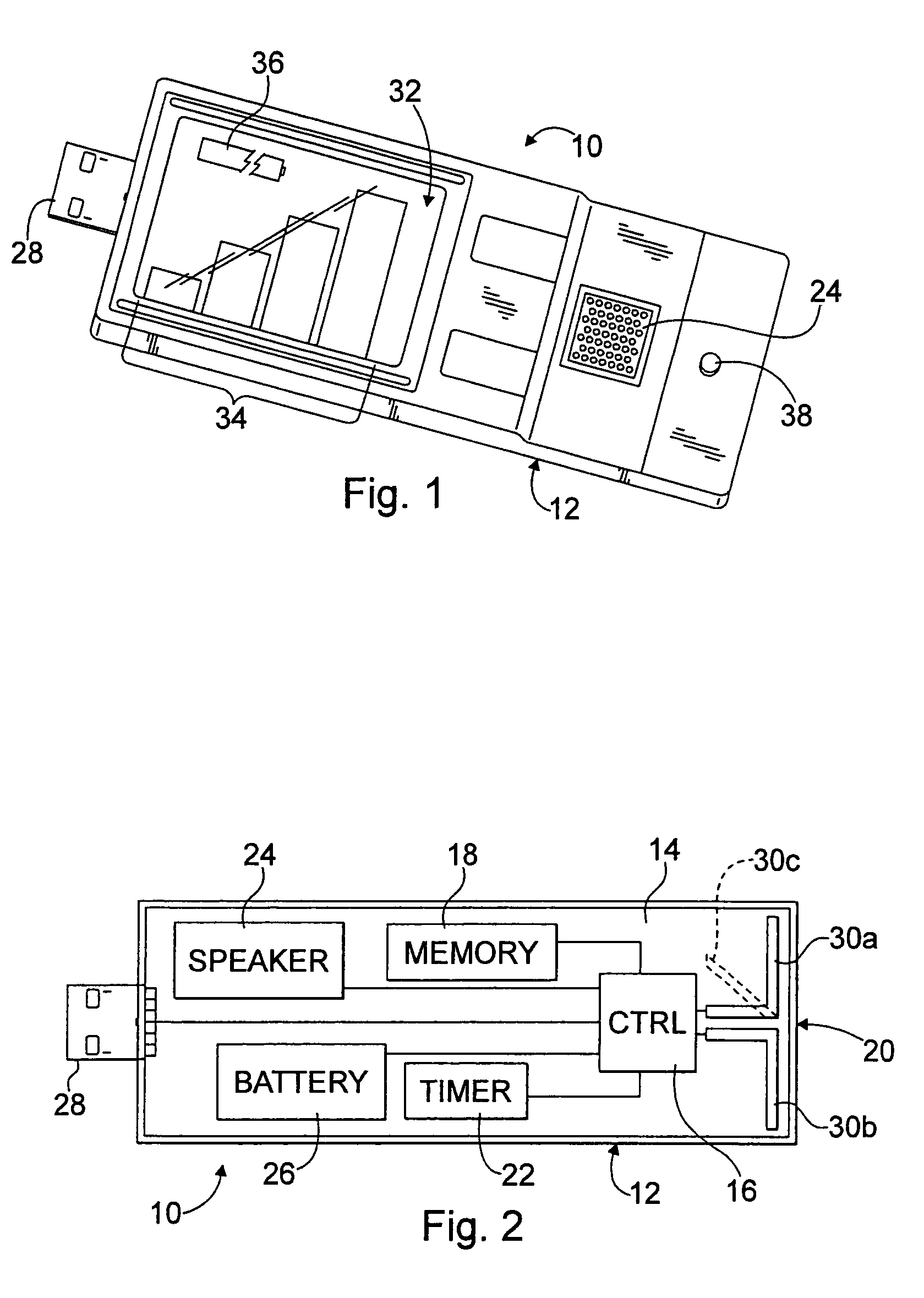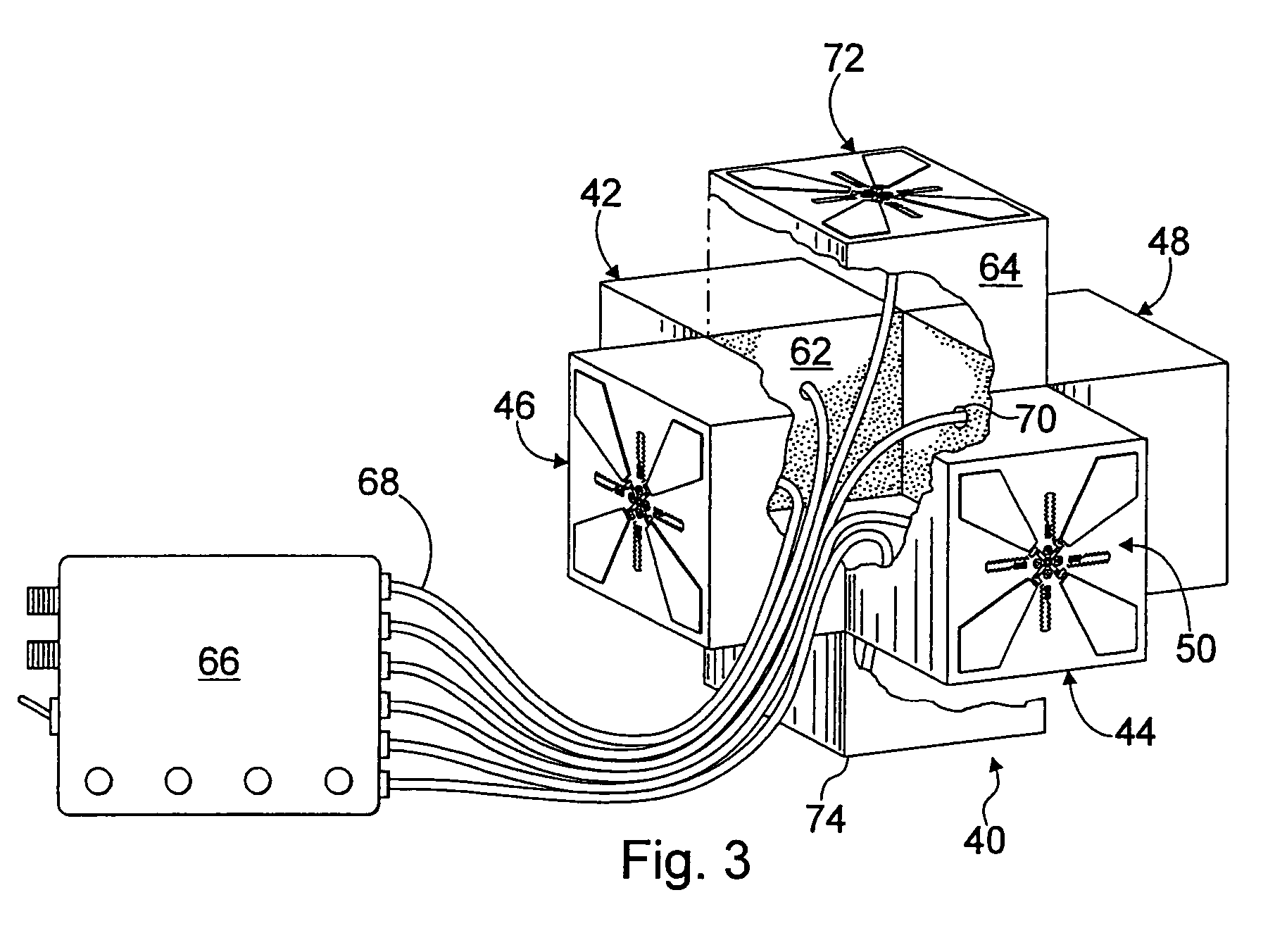Transient RF detector and recorder
a transient rf detector and recorder technology, applied in the direction of transmission monitoring, receiver monitoring, instruments, etc., can solve the problems of irreversible damage to a wide range of electrical and electronic equipment, including computers and radio or radar receivers, equipment can be irreversibly damaged or, in effect, electrically destroyed, and complete replacement of equipmen
- Summary
- Abstract
- Description
- Claims
- Application Information
AI Technical Summary
Benefits of technology
Problems solved by technology
Method used
Image
Examples
Embodiment Construction
[0043]For purposes of the description hereinafter, spatial or directional terms shall relate to the invention as it is oriented in the drawing figures. However, it is to be understood that the present invention may assume various alternative variations, except where expressly specified to the contrary. It is also to be understood that the specific apparatus illustrated in the attached drawings, and described in the following specification, is simply an exemplary embodiment of the invention. Hence, specific dimensions and other physical characteristics related to the embodiments disclosed herein are not to be considered as limiting, unless otherwise indicated. The present invention will now be described with reference to the accompanying figures.
[0044]With reference to FIGS. 1 and 2, a device 10 for detecting a predefined RF transmission of electromagnetic radiation is shown. In a desirable embodiment, the device 10 includes a housing 12 having a circuit board 14 containing or connec...
PUM
 Login to View More
Login to View More Abstract
Description
Claims
Application Information
 Login to View More
Login to View More - R&D
- Intellectual Property
- Life Sciences
- Materials
- Tech Scout
- Unparalleled Data Quality
- Higher Quality Content
- 60% Fewer Hallucinations
Browse by: Latest US Patents, China's latest patents, Technical Efficacy Thesaurus, Application Domain, Technology Topic, Popular Technical Reports.
© 2025 PatSnap. All rights reserved.Legal|Privacy policy|Modern Slavery Act Transparency Statement|Sitemap|About US| Contact US: help@patsnap.com



